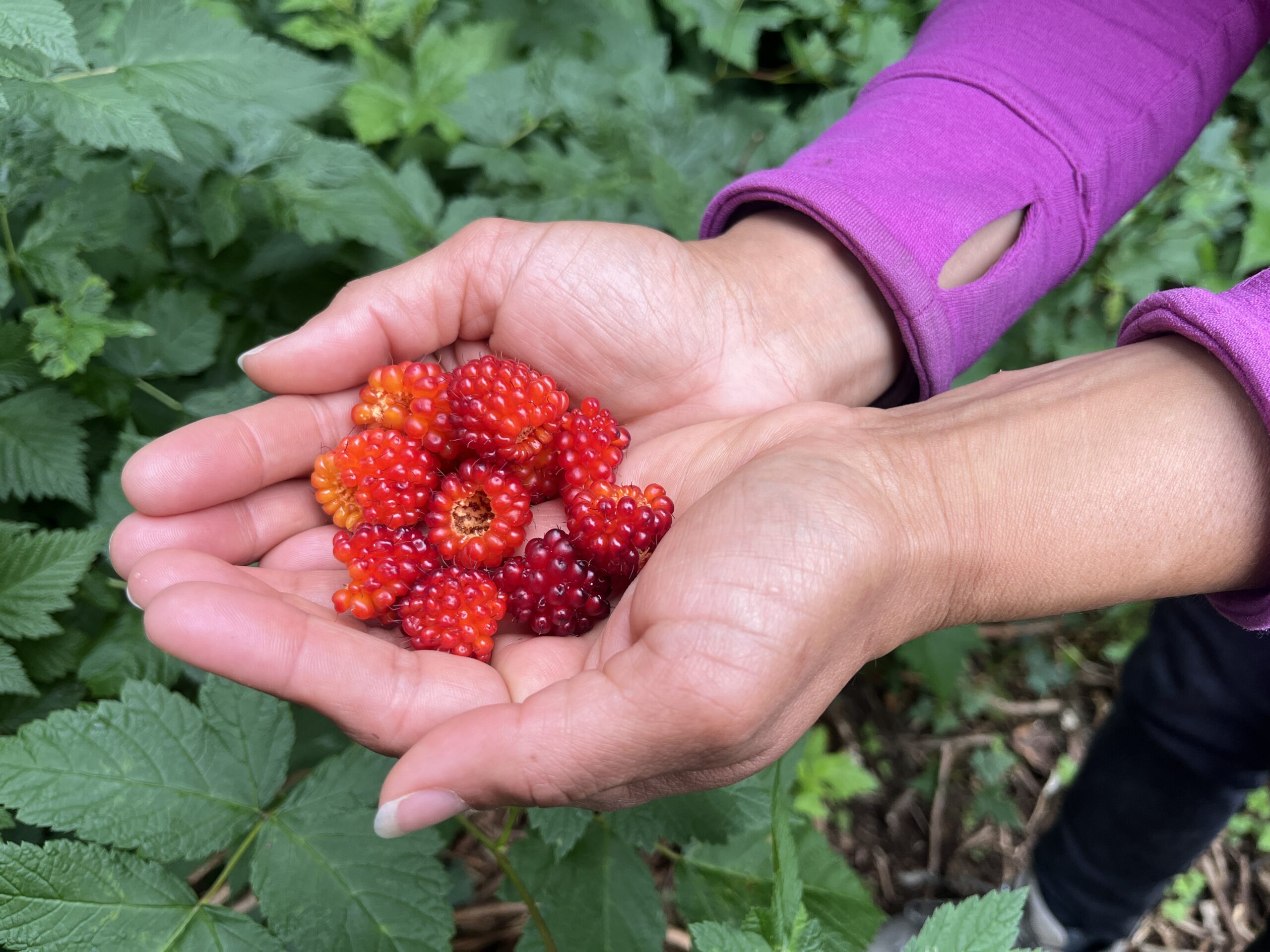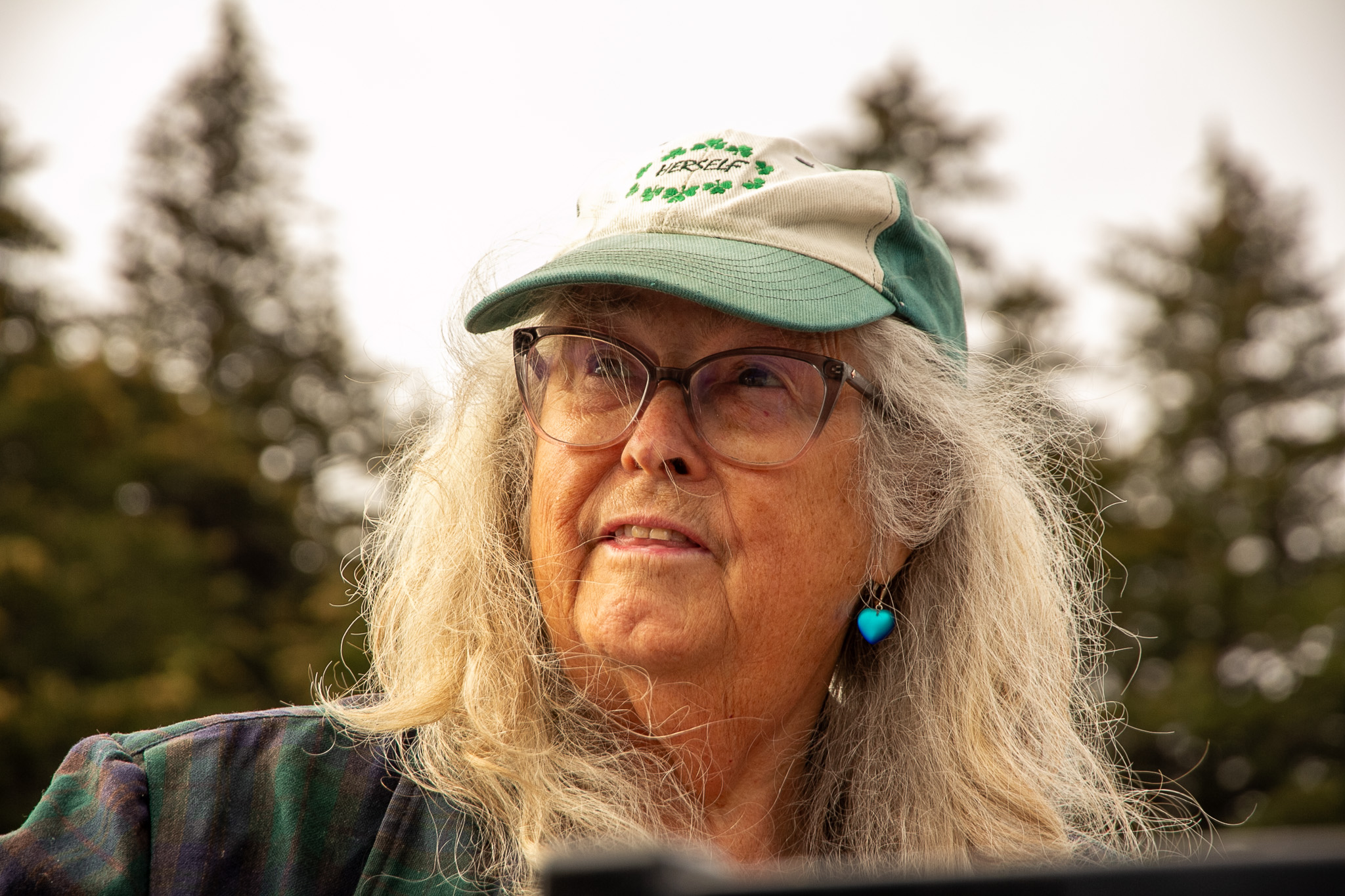ARTICLE AD BOX
 Elizabeth Lakshmi Kanter holds freshly-picked salmonberries connected her onshore successful Homer. (Rachel Cassandra/Alaska Public Media)
Elizabeth Lakshmi Kanter holds freshly-picked salmonberries connected her onshore successful Homer. (Rachel Cassandra/Alaska Public Media)About 10 years ago, Genelle Winter noticed that berries successful Metlakatla were overmuch smaller than normal. So did a batch of different group successful nan community. Some berries were wholly dried up and immoderate bushes produced a 2nd aliases moreover 3rd group of flowers to effort to reproduce. She said it was 1 of nan early informing signs of what was officially deemed a location drought successful 2018.
“And past each of a sudden, each of those indicators that we had been taking statement of made sense,” Winter said. “It each benignant of fell into place.”
Winter, who useful for nan Metlakatla Indian Community successful Southeast Alaska, said she’s besides noticed different changes successful berries since moving to Metlakatla 3 decades ago. She said work berries aliases saskatoon are thriving.
“We’re seeing much and much and much of it,” Winter said. “And I’m purely speculating that it’s because it prefers nan drier conditions… It besides likes much sunlight. So it’s moving into nan developed areas.”
Wild Alaska berries are 1 of nan most nutritious and antioxidant-rich foods available. But Metlakatla is conscionable 1 of galore Alaskan communities noticing melodramatic changes successful berry production. In nan past fewer years, group have reported precocious salmonberries successful Seldovia, insects connected cloudberries successful Trapper Creek, oddly shaped low-bush cranberries successful Anchorage, and early blueberries successful Fairbanks.
The changes effect berry harvests that Alaskans trust connected for nutrition, culture, and relationship to their environment. Berries are costly to import, truthful galore Alaskans can’t switch them successful their fare if they person a debased harvest year. And immoderate changes successful berries besides effect nan animals that eat them, for illustration ptarmigan, voles, and bears.
Climate alteration is altering galore different aspects of where, erstwhile and really berries grow. For nan past 2 decades, researchers astatine nan University of Alaska Fairbanks, aliases UAF, person been studying berries successful Alaska.
Katie Spellman, an master connected Alaska’s chaotic berries and a interrogator astatine UAF, said she hears reports connected changes successful berries from communities passim nan state.
“In immoderate places it’s changing abundance aliases timing of nan berries,” Spellman said. “And successful immoderate places, it’s expanding insect pests connected their plants, aliases flowers frying up owed to upwind aliases drought conditions.”
Spellman and her colleagues been collecting reports from Alaskans astir berry maturation and harvest. They’re besides collecting information connected berry size and quality, life rhythm timing, and impacts of snowfall pack, to thief Alaska amended understand and respond to nan impacts of ambiance change. Some of their information for blueberries dates backmost to 100 years ago. Their purpose is to make judge Alaskans tin prime some chaotic and cultivated berries successful nan decades to come.
The bully news, Spellman said, is that Alaska berries are not going to disappear.
“None of them are going extinct,” Spellman said. “They mightiness displacement their regions truthful that we person to commencement utilizing different berries arsenic substitutes for nan ones that we’ve traditionally picked.”
But she said because of ambiance change, Alaska now experiences much variety year-to-year successful temperature, rainfall and snowfall. All of those factors effect berries successful a wide assortment of ways. One of nan much delicate berries, she said, is cloudberry.
“[It] utilized to beryllium measurement much communal erstwhile I was small increasing up present and now, you situation not show anybody wherever you recovered your cloudberry,” Spellman said.
Because ambiance alteration impacts are unpredictable, Spellman said nan champion measurement communities tin accommodate is to person a diverseness of berry plants. UAF useful pinch willing communities to stitchery information astir really berries are increasing adjacent them and to travel up pinch plans astir really to accommodate arsenic ambiance alteration shifts berry habitats.
She said communities are getting imaginative to make judge they person entree to berries long-term. One solution she said she loves is for blueberries successful Hoonah.
“They’re actively managing nan canopy successful definite patches connected nan northbound broadside and southbound broadside of slopes,” Spellman said. “So that successful basking years, nan northbound broadside is much productive, and successful acold years, nan southbound broadside is much productive, truthful that they ever person immoderate benignant of berry spot for their organization to spell to.”
In Metlakatla, Genelle Winter is portion of a squad moving to summation organization resilience and nutrient security.
Because nan organization has noticed serviceberries are thriving, they’re including nan type successful their unfolding nutrient wood plan. Winter said they’re planting arsenic galore fruiting and edible plants arsenic they tin passim nan community, swapping them retired erstwhile ornamentals request replacing.
“We’re each really moving difficult to effort to make judge that we’re preserving these type for early use, arsenic good arsenic trying to archive nan knowledge associated pinch really to usage and really to sphere nan various berries,” Winter said.
She and her colleagues are moving pinch kids to plant, harvest, and stitchery information astir berries and different consequence successful Metlakatla. They dream that intends group successful Metlakatla tin harvest berries for galore generations to come.
UAF is holding a free online class Aug. 28, from noon-one p.m for Alaskans who want to study much astir ambiance alteration impacts connected berries and really their communities tin adapt.
RELATED: BYU scientists sojourn Alaska to study Alzheimer’s successful Pacific Islander and Indigenous elders










 English (US) ·
English (US) ·  Indonesian (ID) ·
Indonesian (ID) ·